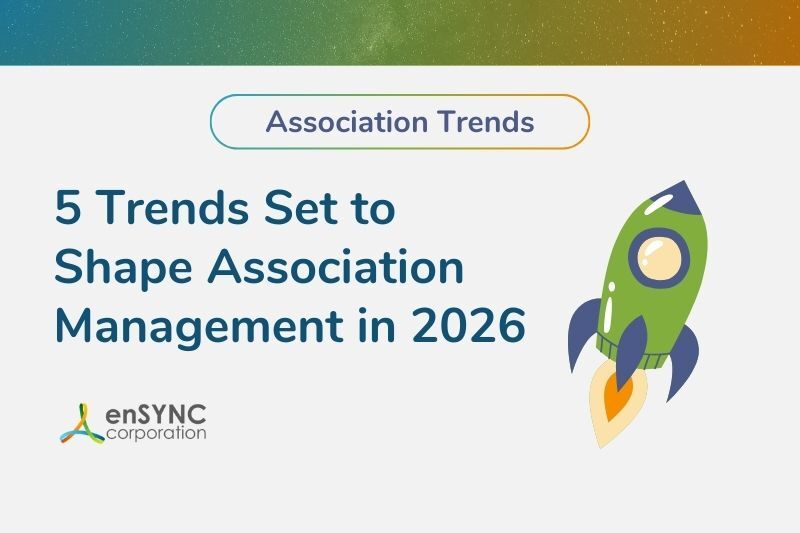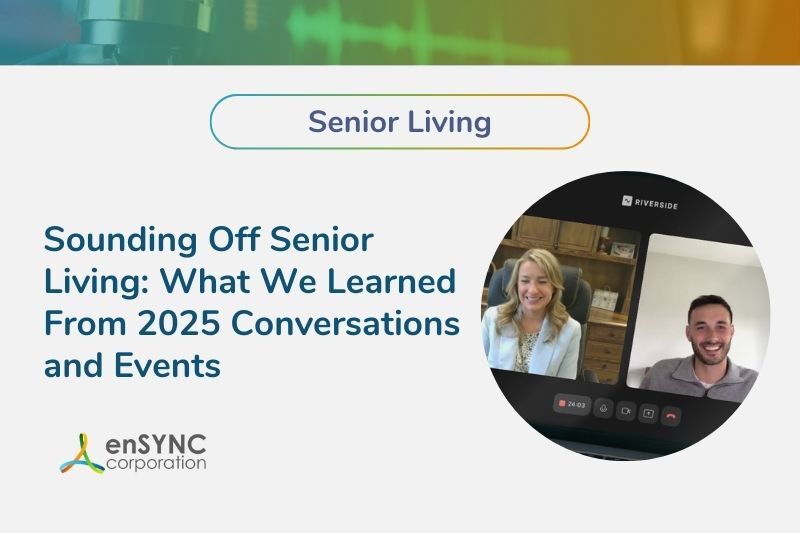Technology & digital transformation | Software solutions | Educational institutions
Easy Guide to Choosing Software for Continuing Education
October 24, 2022
|
How to Choose the Best Software for Continuing Education
Education no longer stops at the university or college level. Associations, nonprofits and learning institutions can now address the growing need for continuing education by offering courses, certifications, and online training programs that help professionals reach their career goals.
Software for continuing education is part of the digital transformation strategy organizations can use to access this growing market. It’s more sophisticated than ever before while being easy to use, enabling learning institutions to offer effective learning experiences and grow their membership base.
Continuing education students are different
Professionals seeking continuing education have clear goals, including promotions, maintaining a license, or general interest. Often these students are older and more committed to constantly training as part of their career paths. They also know exactly what they need according to the requirements of their employer or licensing institution.
Continuing education is not strictly confined to traditional employee training, such as customer education, current sales training techniques, or courses on compliance training. Specialized learning centers can now leverage digital tools to deliver online training initiatives such as community education programs, cultural training, and other unique education courses.
Whatever the subject matter, learning organizations can offer classroom-style training, online training courses, education credits, and learning materials that address these growing markets. In addition, learning institutions can expand their offerings to include professional development products and services such as mentorships, webinars, workshops, podcasts, and email newsletters.
Learning management systems address the growing demand for continuing education
An internet-based online learning management system (LMS) enables an educational organization to provide flexible digital and blended learning experiences.
Modern education software is more powerful, intuitive, and flexible than ever. Some features to look for in an online learning platform include:
Responsive Interface
Students need to be able to access content on any mobile device. Look for a system that has a fluid, responsive interface that can be accessed across any mobile or desktop device without any loss in functionality.
Group Learning Environment
Group classroom learning is a critical aspect of education that brings students together to learn concepts, share ideas, and collaborate on projects. Modern LMS solutions bring groups together in a virtual learning environment with video-based courses, events, and conferences.
Certification Management
Professionals have career goals that are closely aligned with continuing education. Create certification paths that simplify the process so students can keep track of their courses, evaluate their progress, and stay motivated as they achieve their goals.
Assessment Tools
Student evaluation is mandatory to maintain the integrity of any continuing education program. Look for education management software that offers various assessment tools such as proctored exams, quizzes, surveys, and timed assessments.
Badging & Gamification
Badges, points, and other “rewards” help increase learning engagement by giving students opportunities to earn small “wins” on the path towards achieving their goals. Enabling learners to recognize their achievements is critical to the process because it helps them stay motivated and increases the likelihood they complete their learning path.
Comprehensive Reporting
Collecting student data is critical to improving online training content and refining marketing strategies. Look for a modern training system that reports and dashboards managers can use to make effective data-driven decisions.
How to choose the best LMS for your education program
Choosing an LMS is not something you do often, and the process can be complex. Here are some steps you can take to simplify the process:
1. Determine “must-have” features
There are many LMS options on the market today. Revisit your goals and list all the “must have” features you need that align with the long-term vision of your organization.
2. Make a shortlist
Next, make a list of all LMS solutions that fit the requirements set out in the previous step. Create a chart that summarizes each LMS and the features it offers.
3. Pick your pricing model
Some LMS systems are available for outright purchase, however they may not offer the cloud-based features your organization needs.
A subscription model might be a better option. First, determine the number of learners using the system and then calculate the total cost across all options. You should also factor in setup and support costs that may come in the future.
4. Evaluate the vendors
The next step is to evaluate the vendor to ensure they have experience working with academic institutions. Do some research online and on social media platforms to find reviews and comments, and contact references directly to ask specific questions that will help you determine the right LMS for your programs.
Security and compliance are additional factors to consider when choosing an LMS vendor. Look into security and compliance information on the vendor’s website to ensure its credibility.
5. Request a free demo
Once you’ve narrowed down your choices to a short list, contact each vendor to ask for a demo. Be sure to include other team members in the process, and take screenshots of the software's essential functions to aid you in your final decision.
Get more transformative insights with our Educational Association Playbook
Choosing an LMS system is just part of the process learning institutions must undergo to adapt to the needs of continuing education students.
Digital transformation requires a long-term strategy that aligns with your goals. Download our Educational Association Playbook to learn how innovative software solutions can produce better learning outcomes, improve efficiency, increase productivity, and enhance collaboration across your organization.
Recent Posts

5 Trends Set to Shape Association Management in 2026
As 2026 begins, associations are standing at the edge of some major shifts. Member expectations are changing, technology keeps opening new...

The Best of the Blog 2025 — A Year in Review
From forward-looking trend analyses to powerful case studies and thought-provoking conversations, the enSYNC blog featured a host of great content in...
Enjoying our blog?
At enSYNC, we want to empower associations and nonprofits to make well-educated decisions. If you want our industry knowledge (and other free guides) sent directly to your inbox, fill out the form below.


